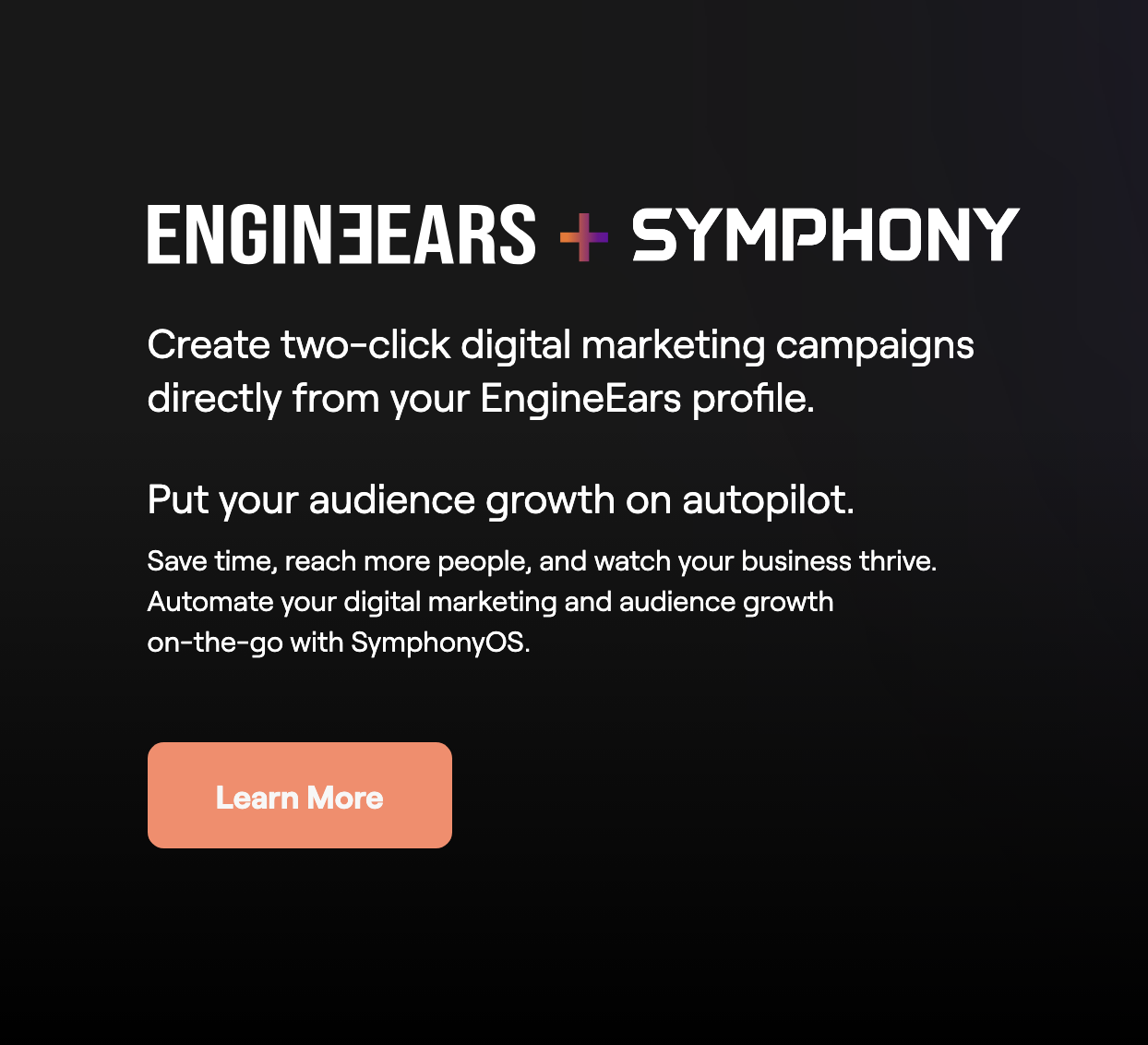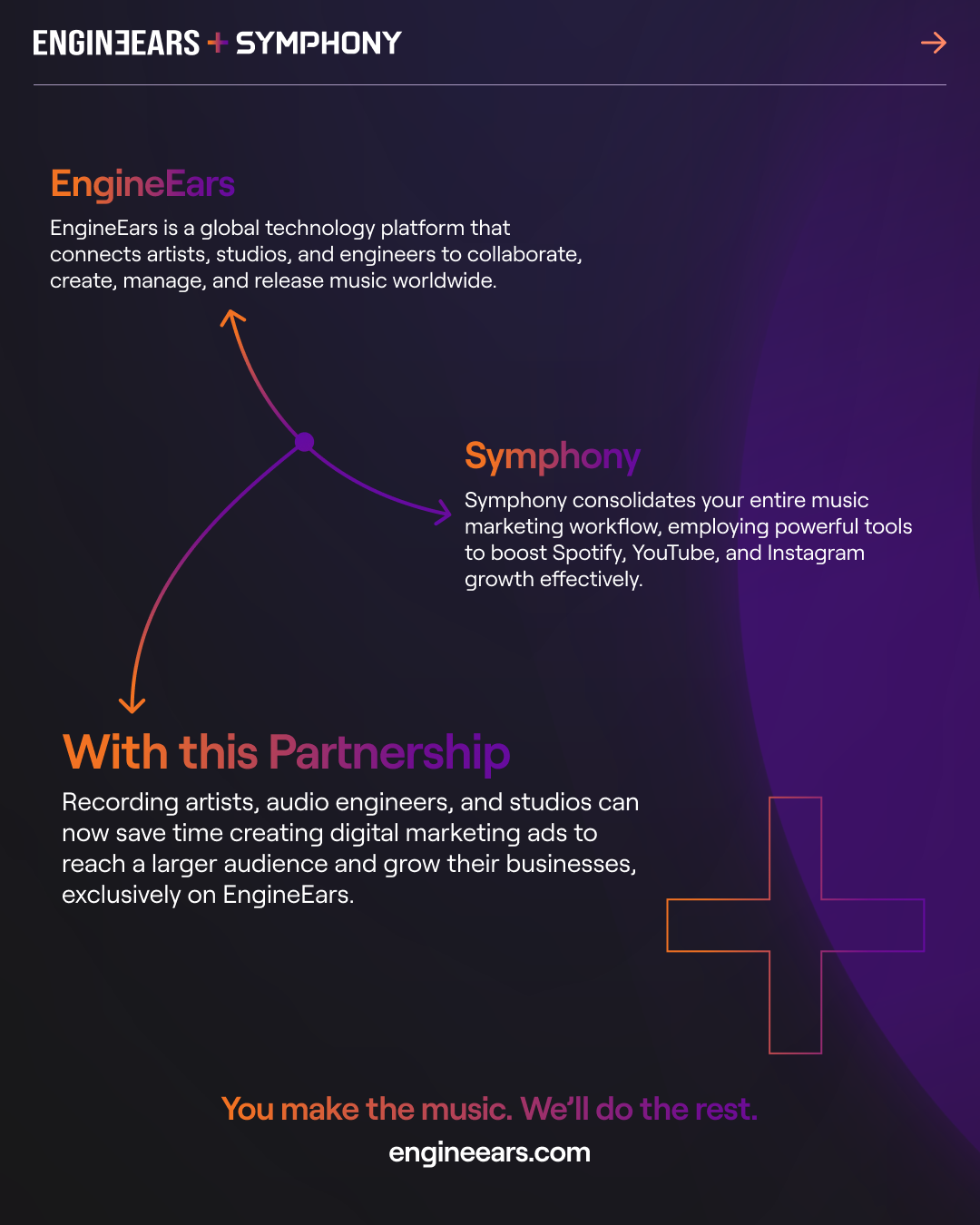Inside EngineEars: MixedByAli Talks UpStream, Artist Monetization, and the Future of Music Distribution
Q&A: MixedByAli on Creating the Music Industry’s First Operating System
The EngineEars Founder Talks Partnerships with SymphonyOS and EMPIRE
Make no mistake. EngineEars’ beginnings were never “humble,” exactly. The platform was built to connect a global network of music-makers with a global network of studio professionals — all in service of democratizing an industry built around art, but not necessarily built for artists to navigate. But with recent upgrades and a pair of truly game-changing partnerships, the platform that founders Derek “MixedByAli” Ali (CEO) and Luke Sorenson (CTO) launched is evolving into something even more ambitious: the music industry’s first self-contained operating system.
The first partnership is with SymphonyOS, which allows EngineEars users to promote their work (services, studio time, music releases) with two-click ad campaigns that simultaneously launch across social networks. The second is with EMPIRE’s white-labeled Supply Chain distribution network — part of a new EngineEars feature, UpStream, that allows artists to not only sell music, merch, and experiences directly to fans, but also release their new music to all major streaming platforms, again with a click or two and all from within a single browser window.

“From indie acts to major stars, there’s a trend of artists wanting to engage with their superfans,” says Sorenson. “These partnerships enable that, but also because we offer recording, mixing, and mastering, we see EngineEars as the essential tool in an artist’s arsenal — not only to release music but also to build out catalog over time, collaborate with others to finish projects, market those projects, and then use that revenue to get to work on the next one.”
Below we sit down with MixedByAli for a deeper dive into the implications of EngineEars’ latest developments — not just for the platform’s active community, but also for the industry at large.
How did we get to this pivotal point in EngineEars’ evolution?
So, the history is we started with providing business solutions for audio engineers. That allowed us to scale up to recording studios, which set the stage for us to offer more business solutions with better UX, improved project management tools, and — recently — our marketing tech partnership with SymphonyOS. Now, we look at the bulk of the platform as being complete — all the offerings for service providers are there, and our next steps are to enhance those over time. Now, we want to put our muscle behind artist services. We’ve built EngineEars for collaboration, with our audio engineers and recording studios loving the platform and bringing their business here, and we want to have additional offerings for the independent artists and record label artists that they work with, so they can not only come in to make new music, but also release it to the world and get the word out. So this nearly completes the operating system, where we now have tools and utilities for all music creators and music professionals. And now artists can monetize off of their newly completed projects by doing one of two things — or both.
You’re talking about UpStream. How does it work?
UpStream is a brand new capability where an artist has the ability, once they’re ready to release a song or project, to set up direct-to-consumer campaigns which allow them to sell the digital download of their new project for a particular price, or even a flexible pay-what-you-want fee, but they can also bundle in merchandise: sweaters, T-shirts, signed notes, vinyl… Artists can bolster up bundles attached to a release so that their fans can (a) buy and support the project by itself as a high-quality download, or (b) buy Bundle 1 which might come with the a T-shirt for a higher fee, or (c) purchase Bundle 2, which is maybe the project, a T-shirt, and vinyl, etc. So, they’re able to create all types of offerings, and price points from $0 to something deluxe, for their biggest fans.
And they’re also able to send it to streaming services?
Yes. UpStream also offers music distribution services, so when artists finish a project, they can simultaneously schedule a DTC release and schedule the music’s release to all streaming platforms via our partnership with EMPIRE’s Supply Chain distribution network. So, say you just received and approved the 10-song project you worked on through EngineEars. Now a couple of clicks, you can set up a campaign saying: on this date I want to sell my music direct to fans on my profile, but on this date I want my product to be automatically uploaded to all DSPs. It’s automated, it’s streamlined, and if the artist staggers the releases, say, four or five days apart, they’re able to maximize DTC sales before sending their music to the widest audience possible for discovery.
How did EMPIRE come into the picture?
When EMPIRE started, one of the first albums they distributed was one of the first albums that I ever mixed — Kendrick Lamar’s Section.80. Fast forward to 2022, and Ghazi [Shami, EMPIRE founder and CEO] is an angel investor in EngineEars’ bridge round. I want to say that one of our founder-market fits in building this platform is that it’s all organic, relationship-based. The people that are really changing the landscape of the music industry have been doing so for decades and are now coming together with more purpose than ever. Partnering with SymphonyOS is the same — I met the founders when they ran a marketing agency and were working a SZA LP that I was engineering. I got to see firsthand the intention and integrity that fueled them in supporting an artist’s vision and spreading an artist’s work. We’re all still working toward the same goal.
Helping artists have a more direct relationship with both their business and their fans.
Exactly. And that’s the thing. We’re providing new ways for artists to engage with their fans. An artist can do a livestream and, if they want to, charge admission. So if you’re releasing an album at midnight, you might host a listening party and Q&A at 9 p.m. You have that direct connection. The goal is for artists to have this be the platform where they build their foundation — their hub. We also want to enable artists to develop catalog. You have artists like Russ, who is an investor in EngineEars as well, on social media showing the revenue he generates from his consistency of creating and dropping music. We want to give artists the ability to jam out and create catalog. You book a recording studio, get a song mixed and mastered, then release it, sell it, and promote it using EngineEars. You generate revenue, reinvest in your next project, and it compounds over time.

It seems like a no brainer to bring in artists. But by doing so, you’re also inviting fans in.
One hundred percent. We see this not so much as a part of an artist’s portfolio, but as actually being the artist’s profile. They’ll have external links to social media and streaming platforms, but also, as a fan, you can dive into their music — who they are as an artist, who they collaborated with on projects — and get access to one-of-a-kind experiences and rare merchandise. It’s not just for independent artists. Some of the biggest artists in the world are selling their music directly to fans now because the superfans among us want to engage more than just through streaming. And with EngineEars, artists can track that engagement and push it themselves. So, again, we don’t just see this as another platform. This is us building the music industry’s first operating system.